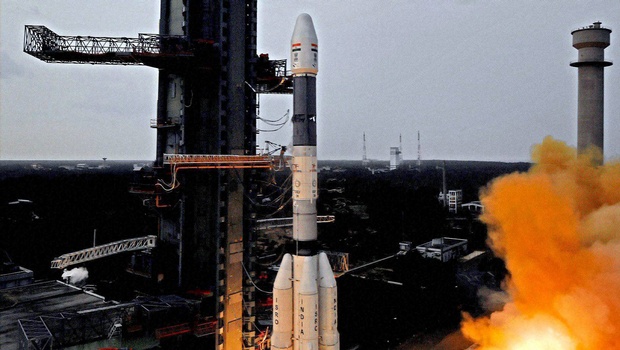Indian Space Research Organization (ISRO) successfully launched India’s communication satellite GSAT-6 first 2,000-kg-plus satellite using the Geo-synchronous Satellite Launch Vehicle (GSLV) D6 from Satish Dhawan Space Centre in Sriharikota.
- (GSLV)D6, equipped with the indigenous Cryogenic Upper Stage (CUS), successfully launched GSAT-6, the country’s latest communication satellite, into a Geosynchronous Transfer Orbit (GTO).
- The GSAT-6 has a six-metre wide unfurlable antenna that can facilitate utilisation of S-band space spectrum for communication and an 80-cm C band antenna that has been reserved for strategic uses.
- GSAT-6 satellite will be orbiting the Earth with a perigee (nearest point to Earth) of 168 km and an apogee (farthest point to Earth) of 35,939 km with an orbital inclination of 20.01 deg with respect to the equator.
- The 416 tonne, 49 m tall GSLV-D6 carrying the 2117 kg, GSAT-6, lifted off at 16:52 Hrs IST.
- The GSAT-6 satellite is the same one that had been leased out to a private company, Devas Multimedia, four years ago for launching satellite-based mobile communication services, Devas had been authorised by ISRO, and the deal had been cancelled by the government in 2012 after allegations of favouritism surfaced.
- ISRO is the sixth space agency in the world after those of US, Russia, Japan, China and France to have joined the indigenous cryogenic regime, which is crucial for launch of heavier satellites weighing more than two tonnes.
- This is the second consecutive success with indigenous cryogenic engine capable of carrying 2-2.5 tonne class of spacecraft.
AffairsCloud Recommends Oliveboard Mock Test
AffairsCloud Ebook - Support Us to Grow
Govt Jobs by Category
Bank Jobs Notification





